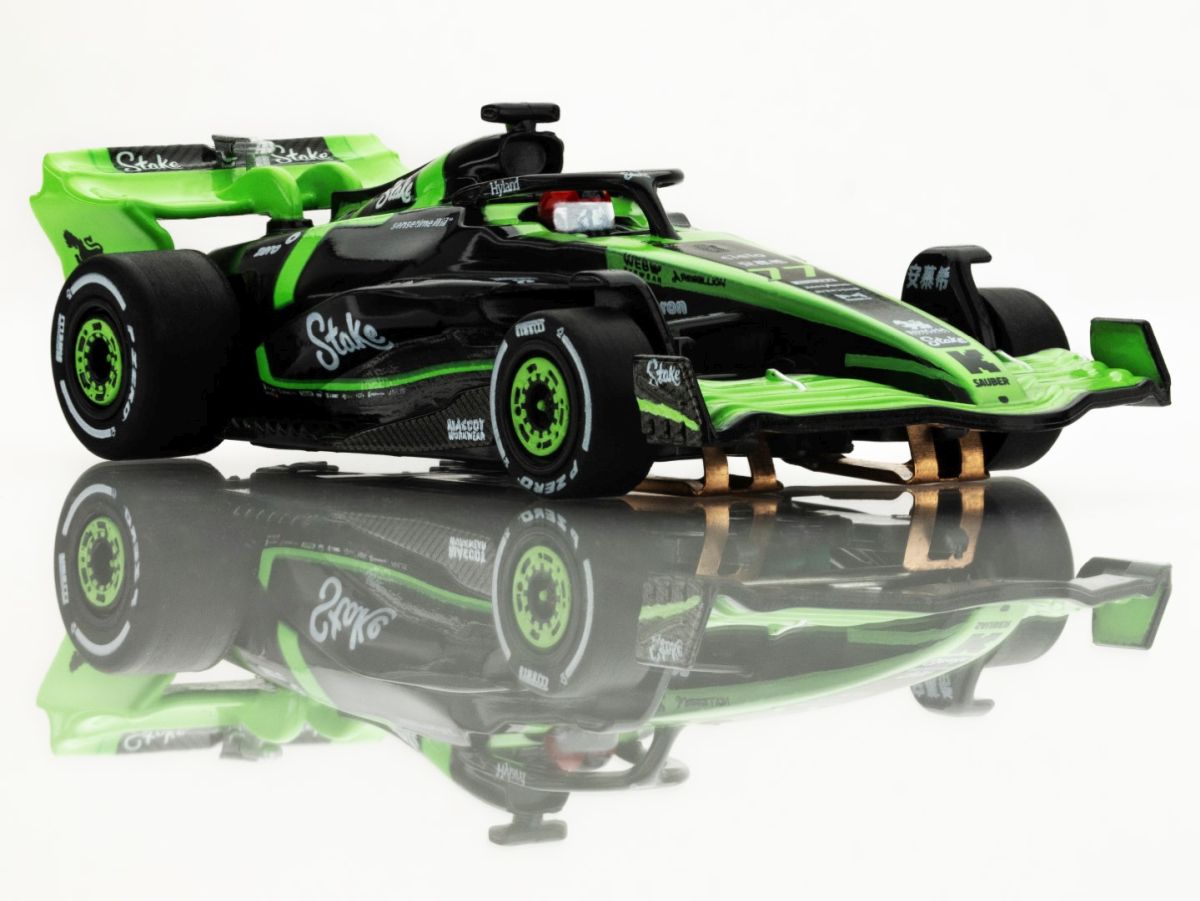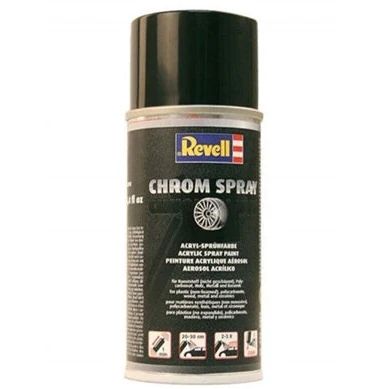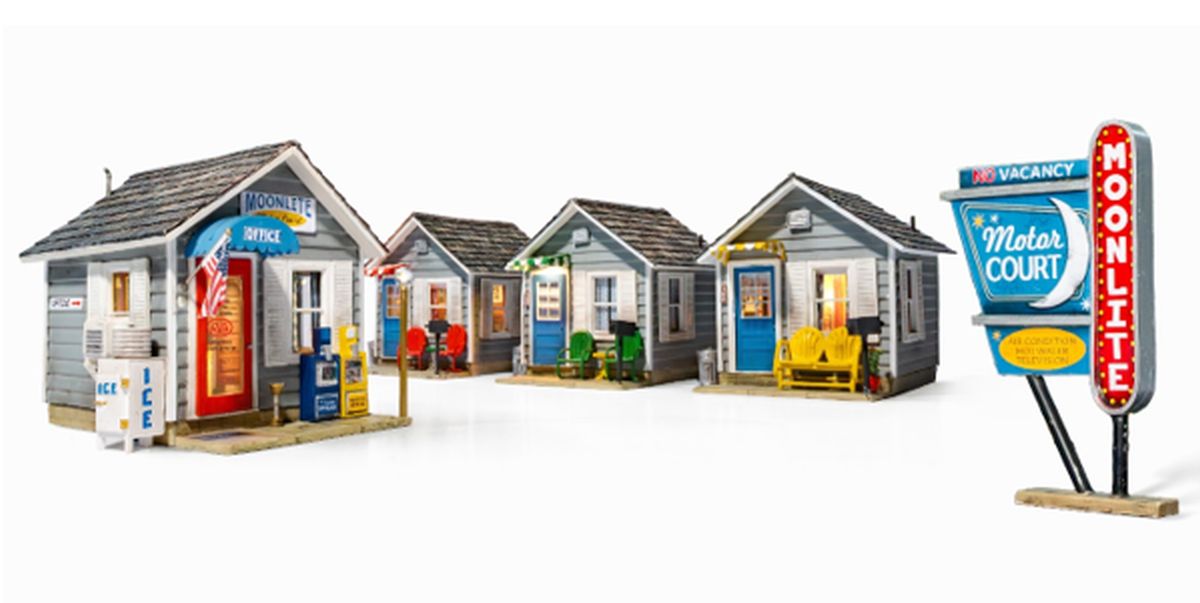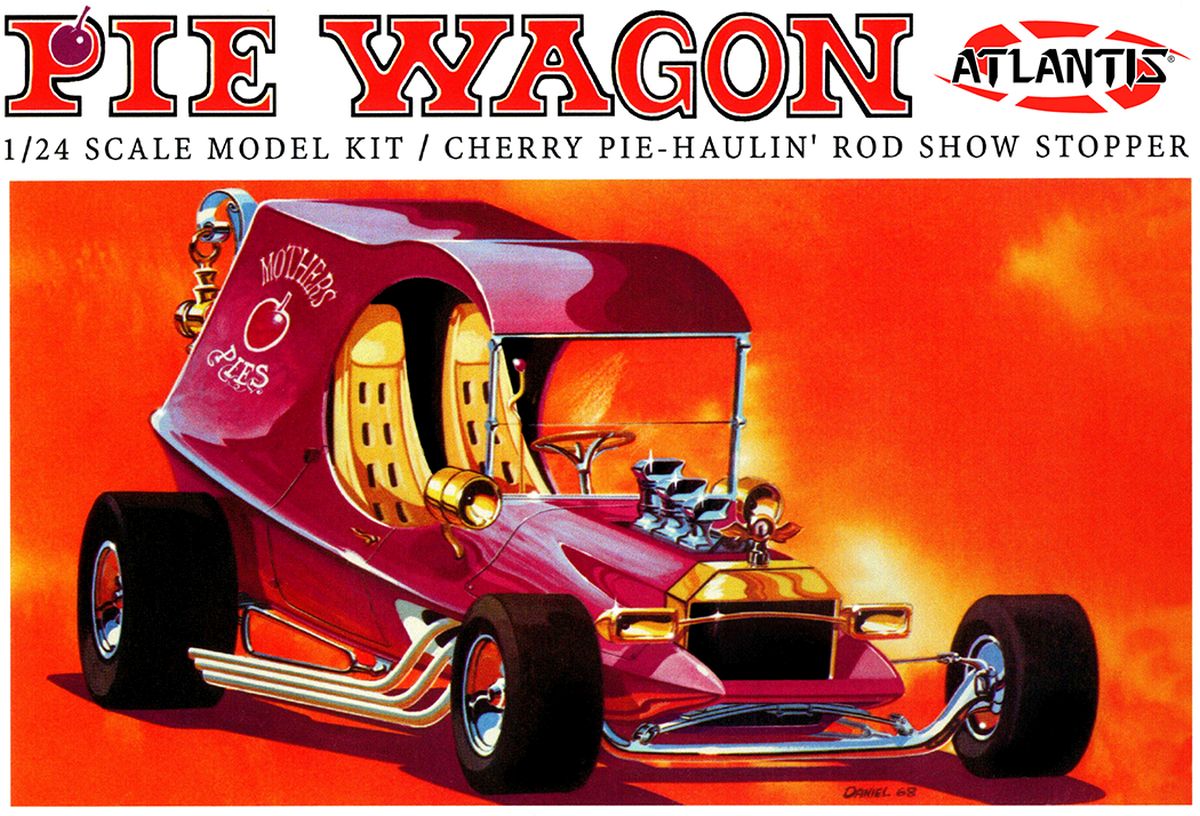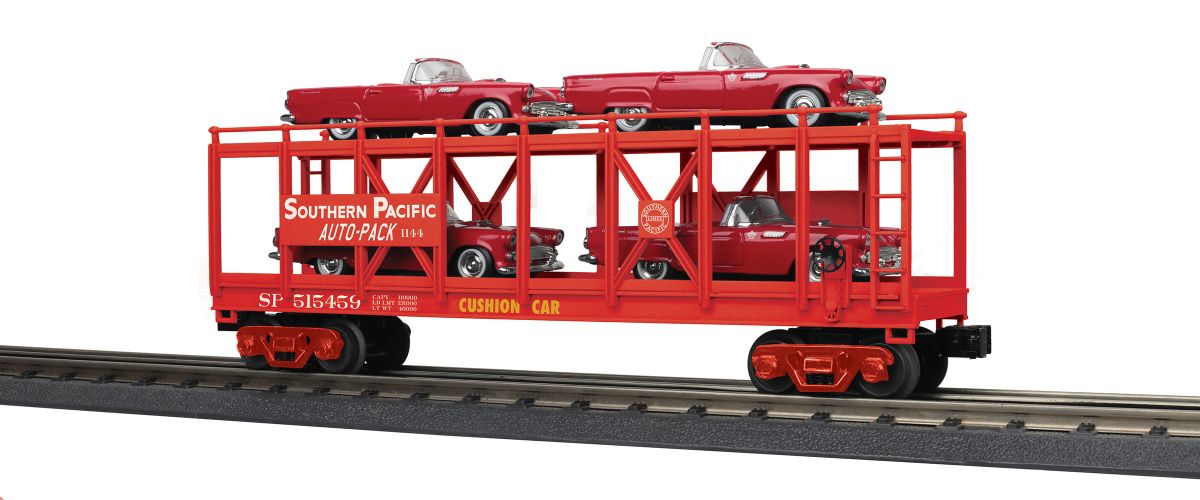
O SP Auto Carrier w/(4) 55 Ford T-Birds
From the beginning, the auto industry depended on railroads to
get its cars to distributors. For the first half-century or so of auto
production, boxcars were the freight car of choice, often with special
end doors and wider side doors to facilitate loading and unloading.
Some automobile boxcars also featured interior racks to help pack more
autos into a car. Nonetheless, an automobile boxcar of the 1940s or
‘50s could still only transport a few automobiles.
A major leap forward came in the 1960s, with the advent of autoracks,
or auto carriers, like our RailKing model: racks added to flatcars to
hold two or three layers of autos, packing up to 15 or more vehicles
onto a single flatcar. Although this revolutionized auto transport, the
idea was not new. In 1923, when the Buick Motor Company’s
production of cars overwhelmed the railroad’s capacity to
ship them out, the Grand Trunk Western devised double-deck racks on
61’ log cars to cram nine Buicks onto every flat.
A strategy that made ‘60s-era autoracks more affordable to
railroads was split ownership. The flatcar was often provided by a
leasing company, while the railroad supplied the automobile rack. This
led to the twin heralds found on several of our M.T.H. models of these
cars, with a railroad emblem on the rack and another
company’s name on the flatcar. While the autoracks were
widespread into the late 1970s, their open construction left autos
exposed to weather, vandalism, and hobos looking to hitch a ride. By
the 1980s, the racks acquired roofs and sides and evolved into the
enclosed autoracks in general use today.
High quality, traditionally sized RailKing Freight Cars provide
detailed bodies and colorful paint schemes for the O Gauge railroader.
MTH makes an enormous variety of RailKing Freight Cars, including many
different car types and roadnames. No matter what era or part of the
country you are modeling, RailKing is sure to have something for you.
Detailed Durable ABS Body
1/2”

